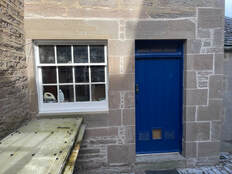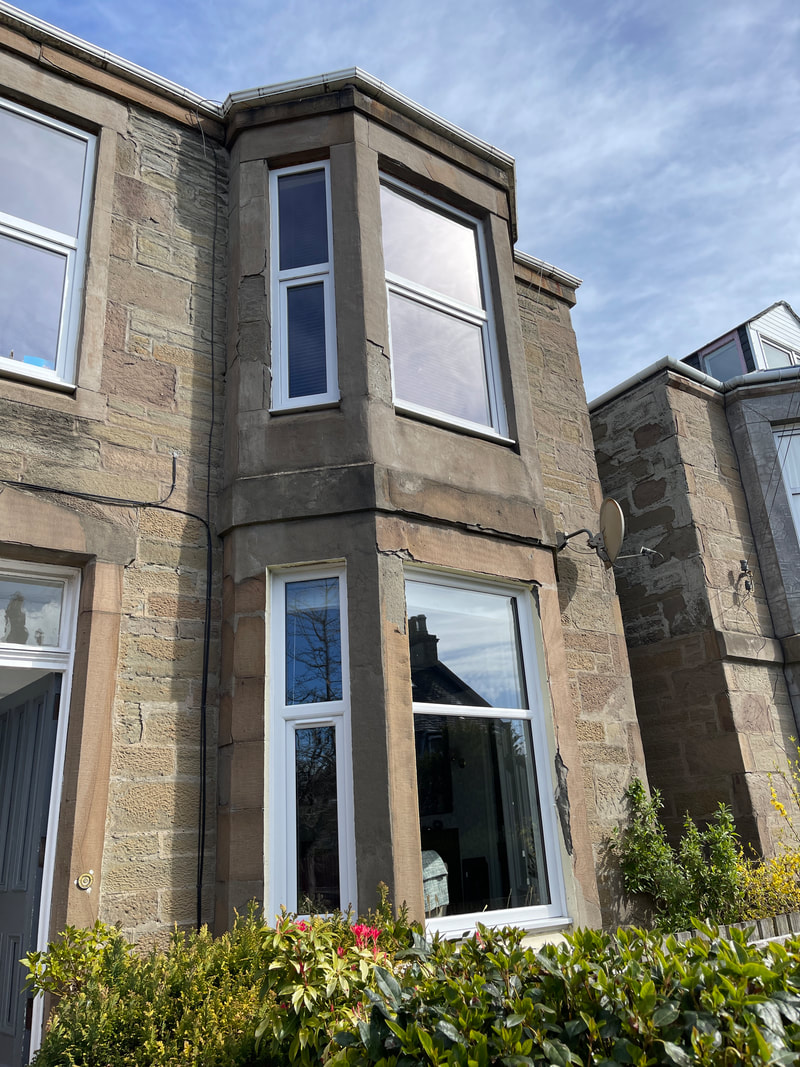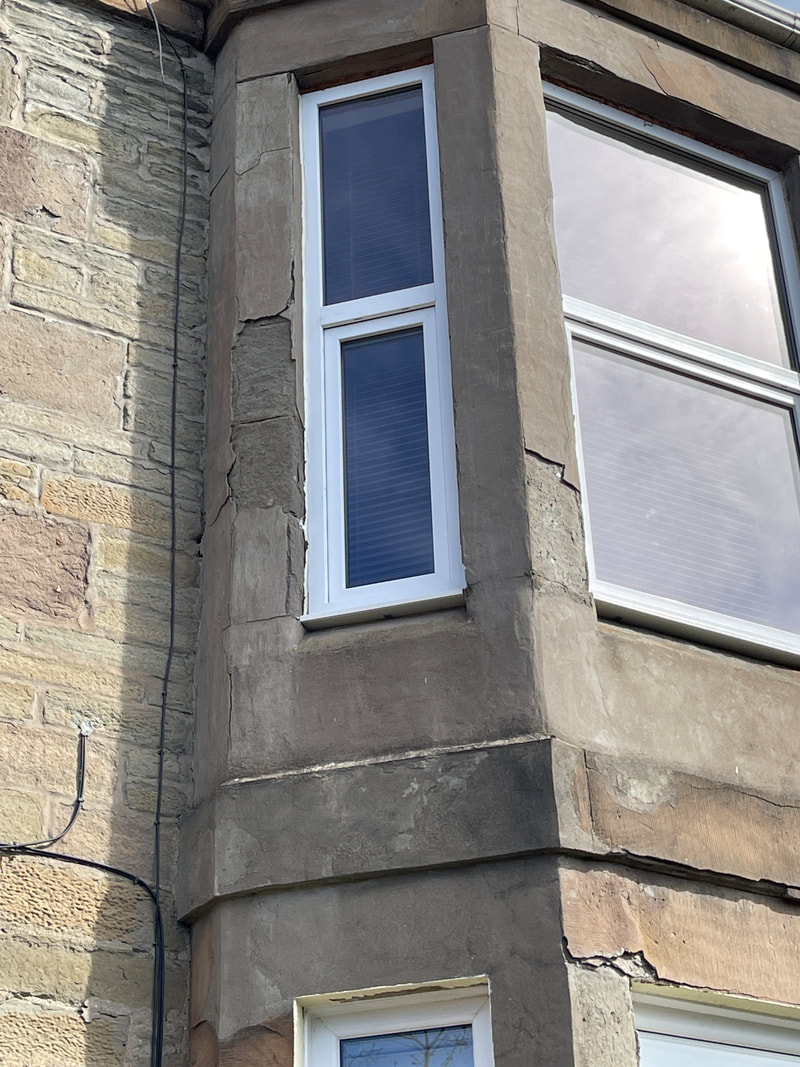What we're working on now
Logie
Tealing
We raked out the cement pointing on this converted steading and repointed with lime mortar.
Dundee
We removed the unsightly cement panel and lintel from the door infill, and replaced with simulated stonework formed inLithomex. After extensive repairs around the window and quoin band, we raked out and repointed the whole wall in lime.
Perth
Here, we cleaned the stone, raked out the cement pointing, re-aligned the copes, and repointed the garden wall in lime.
Perth
Another Lithomex stone repair and lime pointing job
Dundee
We raked out the cement pointing on this gable end, repaired the bands with Lithomex, and then repointed the wall with lime mortar.
Below is a before and after slider
Below is a before and after slider
|
|
Perth
At some point in the past the sill was dropped to enlarge this window, and the sides built up in block and covered in nasty cement repairs that didn’t match anything. We removed the cement, re-coated the rybats in Lithomex and then tooled it to match the existing stone.
A straightforward rake out and repoint
|
|
Carnoustie
A couple of Lithomex sill repairs, to Carnoustie church, tooled and weathered to match existing.
Dundee
Full Lithomex repair of a two-storey bay window.
Below, the finished bay window, coated and pointed
Below— before and after of door lintel repair
Edinburgh
This tired looking chimney atop a five-story Georgian townhouse in Edinburgh, had been neglected over the years. Cement pointing and repairs had contributed to its degradation. We used Lithomes to repair the damaged stonework, removed the cement pointing and repointed in lime.
The cement patch on the right (above) was removed, revealing a large hole. The hole was bricked up to stabilise the chimney. We then coated the brick in colour matched Lithomex and tooled and shaped it to match the original weathered stone, complete with ‘scutch’ marks.
Edinburgh
The contractor involved with this job was just a small builder, and after pricing the job, he realised that he had neither the technical ability or creativity to carry out the Lithomex work himself, and so asked us if we could help. He was used to putting in new stone indents, which neither matched the existing stonework in colour or texture, incongruous with the rest of the building. The amount of stone needed to be cut out for an indent is usually very intrusive and unnecessary, unless it is for structural reasons.
The Lithomex work itself was highly technical, as over the years the wall had developed a concave hollow of several inches at its centre, away to nothing at the two ends. We also had to work to two fixed points of a stone indent in the base, which the builder had set in at the wrong angle.
To create a chamfer of even width and equal angle, and straight lines on the base, was a painstaking job, and took many hours, as any curve or deviation of line would be noticed immediately, once it was pointed.
We used 16 bags of Lithomex, in two colours, in order to fill the varying depths—40mm in places—and finally created a flat surface. Once completed, the client was delighted with the work.
The Lithomex work itself was highly technical, as over the years the wall had developed a concave hollow of several inches at its centre, away to nothing at the two ends. We also had to work to two fixed points of a stone indent in the base, which the builder had set in at the wrong angle.
To create a chamfer of even width and equal angle, and straight lines on the base, was a painstaking job, and took many hours, as any curve or deviation of line would be noticed immediately, once it was pointed.
We used 16 bags of Lithomex, in two colours, in order to fill the varying depths—40mm in places—and finally created a flat surface. Once completed, the client was delighted with the work.
Services |
About us |
|
































